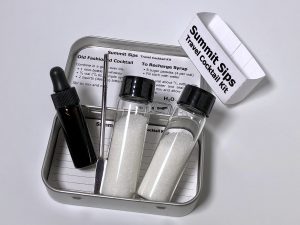
Hunting Vest
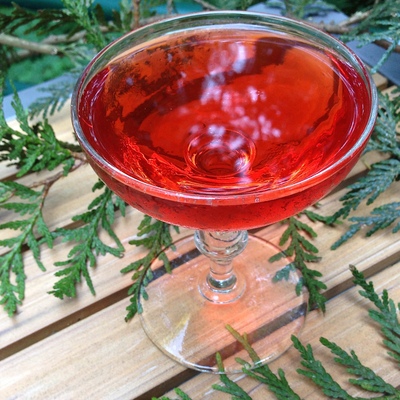
There’s a restaurant on Southeast Division Street in Portland, Oregon called The Woodsman Tavern. The charcoal-fired local fare as well as the decor pays homage to Pacific Northwest traditions and the rich logging history of the region. The place has a sort of rustic elegance that is part drinking tavern part fancy restaurant. The experience is punctuated with a bar program created by Evan Zimmerman, the local mixology genius responsible for the success of more than a few cocktail menus around Portland. We featured another one of Zimmerman’s creations, the Saw Tooth last summer.
This time around, we have a signature cocktail that features a simple but unusual ingredient: charred cedar-infused Campari. The drink is called the Hunting Vest and it has been written up by a couple local publications since The Woodsman Tavern opened. It seems to be seasonally available, so if you visit the restaurant and it’s not on the menu, you can try making it yourself. Charred Cedar and Campari sounds pretty exciting, and the moment we heard about it we knew we had to try it. If you have ever barrel-aged a cocktail, you have some idea how this will turn out, and if you haven’t, here’s your chance to add something amazing to your repertoire without spending the time or the dough on oak barrels.
The beauty of this technique is that the materials are easy to gather. Cedar planks are available anywhere you can buy grilling equipment. They are sold as an accessory for cooking salmon—the wood chars over the grill with the fish on top, and as it cooks, the food takes on a smoky character. Don’t buy fence posts or construction lumber for this. As odd as it sounds, you need to be certain the wood is food-grade, meaning that it isn’t treated with chemicals. Grilling planks are perfect because you can find them almost everywhere which his important if you don’t happen to have Western Red Cedar growing in your backyard. Once you have the wood, fire up the grill or light your propane blow torch.
Charring The Wood
We’ve seen other examples of wood infusion techniques that skip this step, but to truly bring out the character of the cedar (or any wood for that matter), you need to toast or char it. Think of this as wood caramelization to help deepen the flavors and drive the essential oils to the surface. Before you laugh at this and call it a gimmick, consider the fact that nearly every wine and spirit aged in oak is actually aged in toasted and charred oak barrels. You don’t often get to see the inside of a barrel, but if you could observe the coopers’ final construction steps you would see that the staves are toasted and charred over a raging fire before they are assembled, shipped and filled with treasure by vineyards and distilleries. Basically, that’s all we are doing with the cedar except our “barrel” is turned inside-out and the Campari surrounds the planks.
Cedar-infused Campari
Char planks of untreated cedar until well-blackened.
Pack a jar with pieces of charred wood.
Cover with Campari, seal and allow to sit undisturbed for 2 weeks.
Carefully pour out Campari and strain three times through cheesecloth.WARNING: Using an open flame, propane torch or even a grill to char cedar planks is dangerous business. Be smart about it. Wear gloves, eye protection, plan your steps wisely and avoid burning friends, family and property.
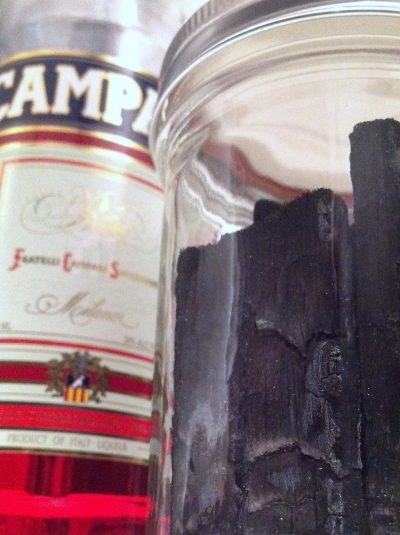
According to Zimmerman, you want a “#4 char” which corresponds to a level consistent with oak barrels used to age whiskey. A lighter char on oak tends to elicit spice and fruity esters while a dark char like a level 4 produces deep vanilla flavors. It’s probably a different story with cedar, but the concept is still the same. So, how much do you really need to burn the wood? We would say that even a little char is better than none, but doing it right probably requires more than just surface discoloration. Using a blow torch and tongs, we were able to make fast work of it. We started by sizing our wood pieces for the jar we were using. Cut them too short and they just float right out of the jar. Cut them too long and they won’t fit. If cedar completely catches fire it can split and explode as it changes shape, so we don’t want that to happen. Keeping the charred surface pointed away from harm, burn each face of the wood until heavy checking appears. Using the photo as a guide you can see consistent cracks formed across the surface, but recognize that just below the char, the wood is still perfectly intact and lightly toasted. We placed the cedar strips across the grate of our grill which allowed them to cool while we worked.
When complete, we filled a small jar with wood, packing it full but trying not to chip off any chunks of char and ash. When filling the jar with Campari, be aware that even charred wood will float itself right out the opening. You need to keep the wood submerged, and the easiest way to do that is to completely fill your jar and tighten the lid. That’s a consideration worth noting before you begin to make sure you have enough Campari.
After two weeks of undisturbed infusion, pour off the Campari and discard the wood chips. We were careful to avoid creating a lot of sediment in the process, but you should filter the Campari three times with cheesecloth or a fine mesh strainer to eliminate any ash that may be floating around. Store and label the infusion and prepare to make amazing cocktails!
Hunting Vest
1 oz cedar-infused Campari
.75 oz Old Overholt Rye
.25 oz Fino sherry
1 oz French dry vermouthAdd cedar-infused Campari, rye, sherry, and vermouth to a mixing glass. Add ice and stir to chill. Strain into a cocktail glass and finish with a lemon twist (discarded).
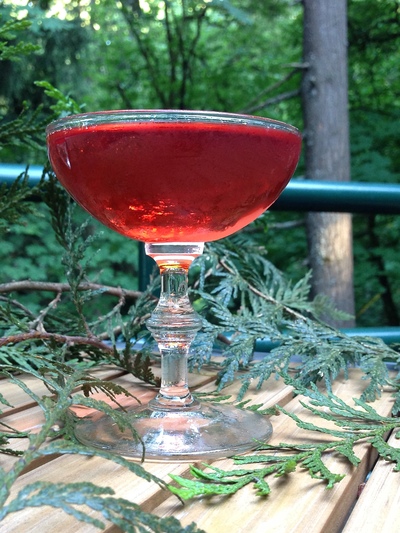
We haven’t been this excited about wood flavors since we barrel-aged a Newark cocktail last year. We love using small oak barrels, but this technique has several advantages. First, instead of just a single cocktail you have a single ingredient which gives you a lot of flexibility. You won’t be limited to making Hunting Vests. You can try a cedar infused Negroni, or a Boulevardier—or even just delicious Campari on the rocks. Second, cedar planks are cheaper and easier to obtain than oak barrels. With all of that wood surface area, you get the flavor into the Campari faster than you would in a barrel, and you can make as little or as much as you like. Finally, it’s a technique that may work equally well with other woods. We will definitely try charring some American white oak to reproduce the barrel effect in a jar.
One thing missing from this option is the melding and maturation that occurs as a fully assembled cocktail ages. Vermouth tends to oxidize a bit in the barrel and as the wood flavors develop, they mingle in ways that take time. With charred planks in a jar with only one ingredient, you don’t get that blending of flavors that you can inside a barrel. However, there’s an easy workaround to completely avoid using barrels—use the jar technique on a whole cocktail!
So, how does a Hunting Vest cocktail taste? It’s a whiskey cocktail, but the rye here acts more like a delivery vehicle for the other elements. Campari is the immediate standout, but here it’s smoother, lighter and more complex. The typical sharp bitter emphasis is replaced with lovely fruit and smokiness that gives way to the herbal complexity of the vermouth and the nutty finish from the sherry. The vermouth and sherry work together here to balance the strength of the Campari-rye partnership and it’s a wonderful effect. Don’t forget the lemon twist—just release the oils from the peel, spread it around the rim and toss it. It’s a wonderful drink that is definitely worth the effort, and a technique that has plenty more applications down the line.
From The Shop:
Recommended:
You Might Also Like:
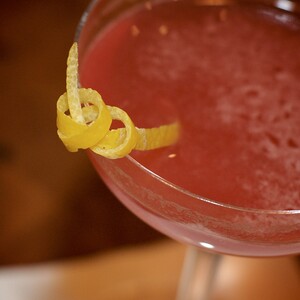
The Scofflaw
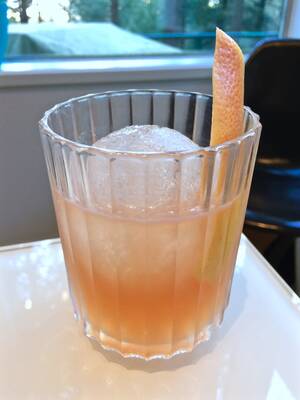
Bicycles & Baskets
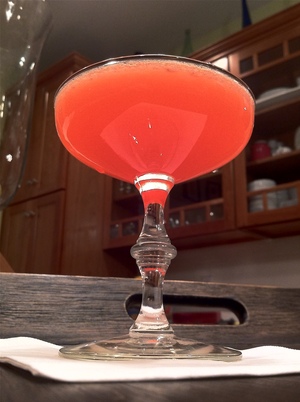
Paper Airplane
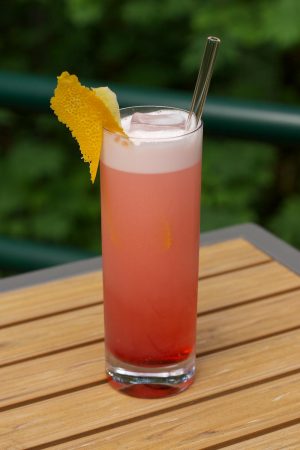
One Flight Up

Basil Oil Garnish
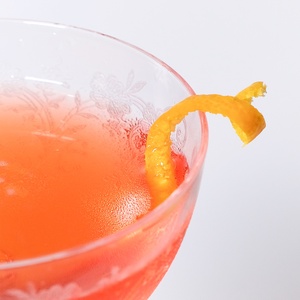
Fogerty
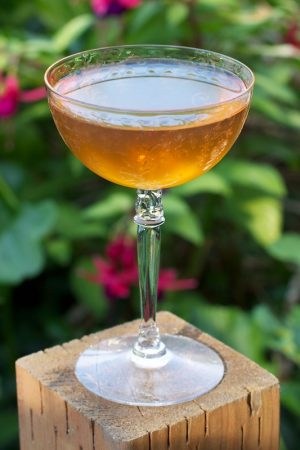
Bensonhurst
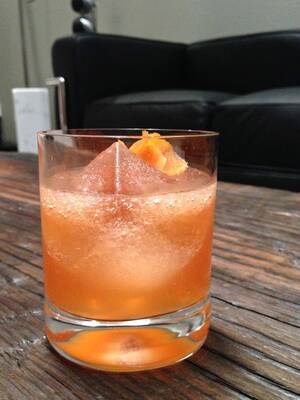
Church
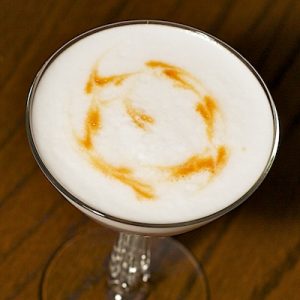
Iron Cross
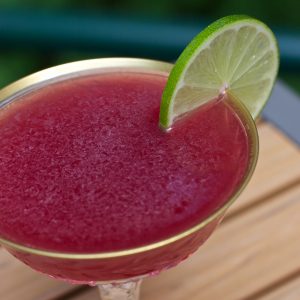
Sea of Cortez

Red Pepper Daisy
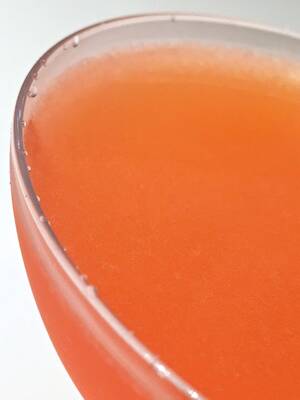
Naked and Famous

Drink with No Name: The Harrington
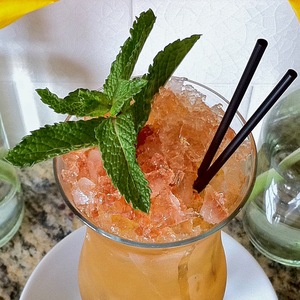
Queen’s Park Swizzle
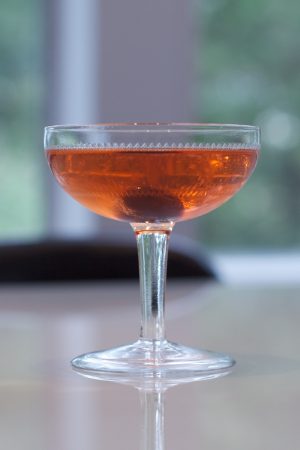
Metropole
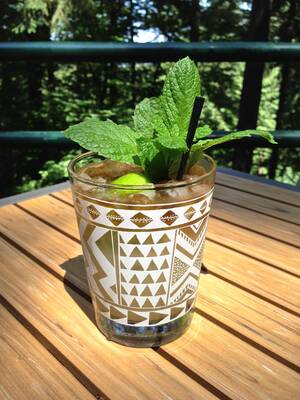
Mai Tai

Breakfast Collins
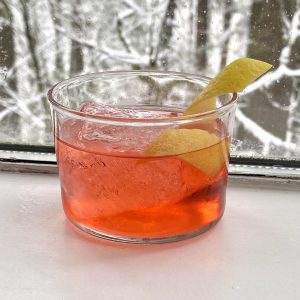
Jalisco Stroll
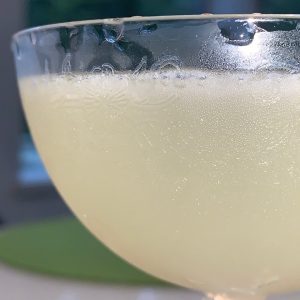
Vieux Mot
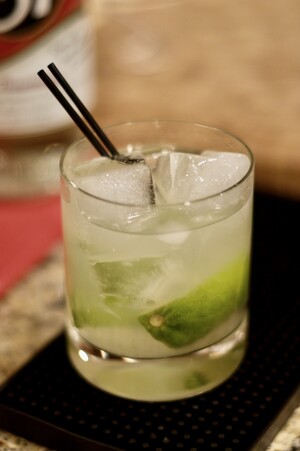
Caipirinha

Grounded For Life
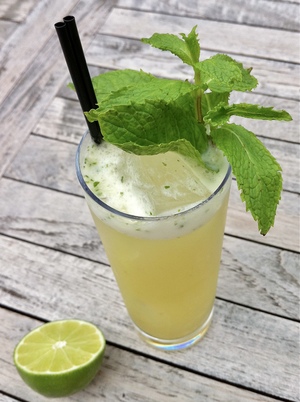
Gin Gin Mule
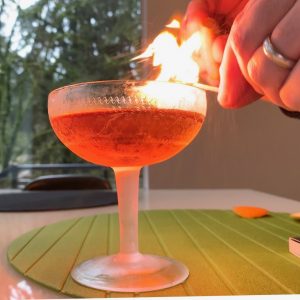
Jaguar
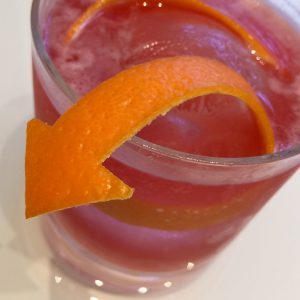
Turn Signal
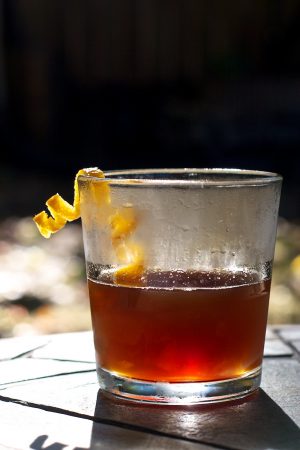
Bitter Branch

Suffering Bastard
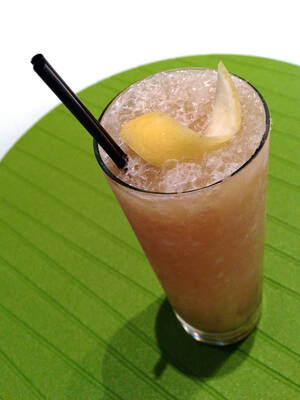
St. Stephen’s Sour
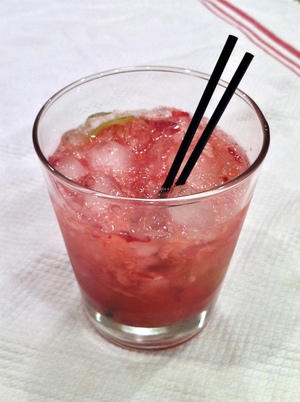
Cherry Caiprissima

Fernelderwood
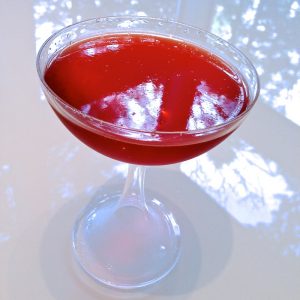
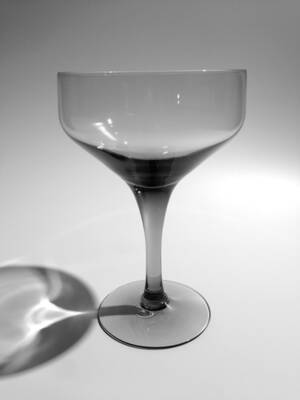

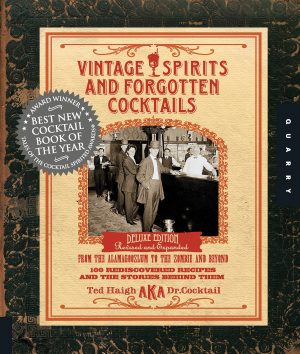


When I read Bitters by BT Parsons I was intrigued by the charred cedar bitters recipe, but never made them.
After reading this, I think I am going to make them my next batch, and probably infuse some Camapri at the same time.
Great plan! My description of the steps is accurate, but it’s actually easier to do the work than it is to describe the steps. This is not difficult at all and we will definitely do this again. Next time, we will be more accurate with sizing the cedar for the height of the jar.
I’d love to hear how it turns out for you!
What an interesting cocktail! Going to think about trying this out at a future gathering…